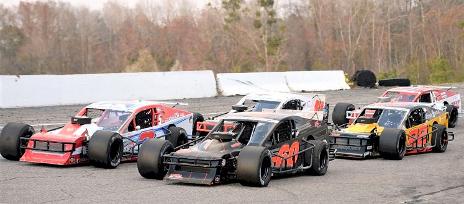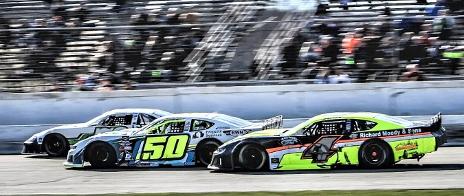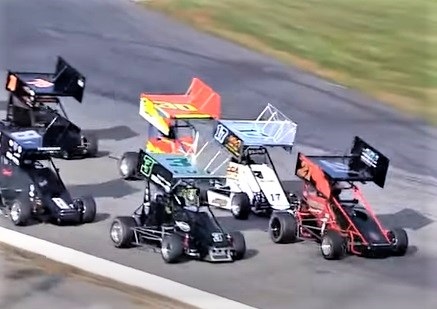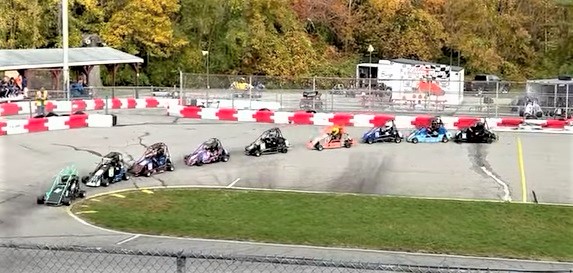THOMPSON SPEEDWAY MOTORSPORTS PARK - THOMPSON CT

Farmer John Hoenig had a dream. A hurricane helped him realize it. The year was 1938 and the chores of the day had been completed. With no advance warning, the skies turned black as huge storm clouds raced over the area. The “Long Island Express” was ready to bear down on New England. The affects were devastating as the famous 1938 hurricane roared through this quiet farming town. When the skies cleared, buildings, trees and just about anything in the storm’s path had been destroyed. Included was the farm of John Hoenig and his family. He
began to remove the downed trees and clear the land. He brought in a rock crusher, built a sawmill, and moved thousands of cubic yards of gravel. All of these items were needed to create his dream. Before long, the nation’s first asphalt racetrack was beginning to take shape and John Hoenig’s dream was coming true. By the standards of the day, a 5/8ths mile, high-banked racetrack was huge. Most tracks had dirt, boards or bricks as surfaces and were ¼ mile in length or less. But, in spite of the critics, Hoenig persevered and on May 26,


1940, the gates opened for the first time to a capacity crowd. Nearly every big name driver in the country set his sights on Thompson, CT. The track became a Mecca for auto racing drivers and fans. Next came the addition of a ¼ mile oval track that was built inside the much larger original track. This track was used to accommodate the growing stock car and jalopy racing groups since the “big track” was too fast for the technology of these cars of this time. When the glory days of the “big cars” and midgets began to fade,
Thompson became a leader in what has become known as Stock Car racing. Thompson Speedway's first event for the newly organized NASCAR Grand National cars came on October 12, 1951. The race saw 38 cars take the green flag, in which Frank Mundy led the first 13 laps. Herb Thomas powered by the next lap and led until he was involved in a crash on lap 97. Jim Reed would lead for 58 laps; but in the end Neil Castles took the checkered flag first a lap ahead of Reed. It would be Cole's lone Cup win in 19 starts. The Cup cars didn't return until 1969. Richard Petty led 95 laps before falling out with rear end issues. From there David Pearson was dominant leading all but seven of the final 69 laps. James Hylton finished second and John sears third. The final Cup race here would come the following year. Bobby Isaac would grab the lead from his pole position, and lead 182 of the 200 laps to beat Richard Petty and Benny Parsons. Over the

NEMA Midgets

The "Little T" race track
years, Thompson Speedway Motorsports Park has attracted some of racing’s biggest names and has been home to many of today’s racing stars. One of the first to leave the Thompson “nest” to test the waters in the major leagues of the sport was Pete Hamilton. He established himself very quickly by winning the Daytona 500 while driving for Petty Enterprises. Geoffrey Bodine and Greg Sacks became Daytona champions after several years of plying their trade at Thompson. Ron Bouchard gained national prominence with a 500 mile victory at Talladega. Steve Park, Brett and Todd Bodine, Jimmy Spencer, Mike McLaughlin and others have gained national prominence following successful years
at this famed Connecticut speedway. Joey Logano cut his teeth early on at Thompson’s “Little T” Quarter Midget Facility.
All Photos copyright and are property of their respective owners
